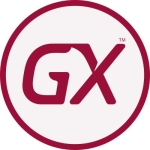Magic xpa is the primary development tool for software that manages healthcare information for about 100,000 people. This information includes demographic data, employment history, coverages, enrolled plans, claims, payments, etc., and it is exchanged via a variety of media including paper forms, standard 832 files, and custom text files.
Being able to make changes to existing programs to comply with last minute changes in requirements, and/or being able to fix, test, review, and deploy new code in a manner of hours instead of days, definitely gives us a huge advantage over our competitors and this is only possible thanks to Magic’s speed of programming.
Three major features keep me working with Magic:
- Magic’s unique approach to development ensures that the programmer stays focused on the objective of the program (i.e. display all customers in California), instead of the repetitive tasks that surround it (i.e. connect to database, open customers table, create the query to retrieve records within the specified criteria, fetch the result of the query, connect it to a data grid, etc.).
- Magic’s Database Gateway allows the logic of the program to be isolated from the underlying database. This provides the flexibility not only to move existing programs to different database environments without the need to change the logic in the program but also allows the programmer access to different databases without the need to know how to "talk" to them.
- Without the need to compile code, the time spent in the development cycle is greatly reduced, allowing the programmer to test modifications to a program immediately after they have been saved.
Magic’s lack of documentation, in both the educational and technical fields, has been a thorn in my side since I can remember.
I worked for Magic at the US branch for several years as a consultant, as part of the tech support staff, and as the main instructor for both Magic xpa and Magic xpi.
I had to write my own study guide to be able to teach Magic v8.x, eDeveloper, uniPaaS and Magic xpa to people who were new to these tools. Magic’s own training material only consisted of either printed PowerPoint presentations inside a binder or a self-paced PDF document. The latter did not follow a clear programming methodology path or even instructions on what components to select during the first installation of the tool.
Magic has a tradition, when it adds new technologies/features to the Magic development tool, to provide either no documentation or documentation that does not provide an organized approach for bringing this new technology/feature to experienced Magic programmers.
I sometimes joke that while you could connect any two people on the planet through six degrees of separation, connecting any two Magic programmers would only need three degrees.
Most of the time new Magic programmers are the result of a company that already uses Magic as its programming platform hiring new developers because the old ones are retiring. At the annual Magic gathering, new faces are few and far between.
Magic has always struggled to bring new developers to its tools. The company has been working in the USA for more than 30 years and still cannot find a way to bring new people to its side of the fence.
More than five years.
I have been working with this tool continuously for the last 30 years. Since the good ol’ days of DOS and Magic v5.02, v5.5, v7.0, v8.0, eDeveloper, uniPaaS, and Magic xpa.








